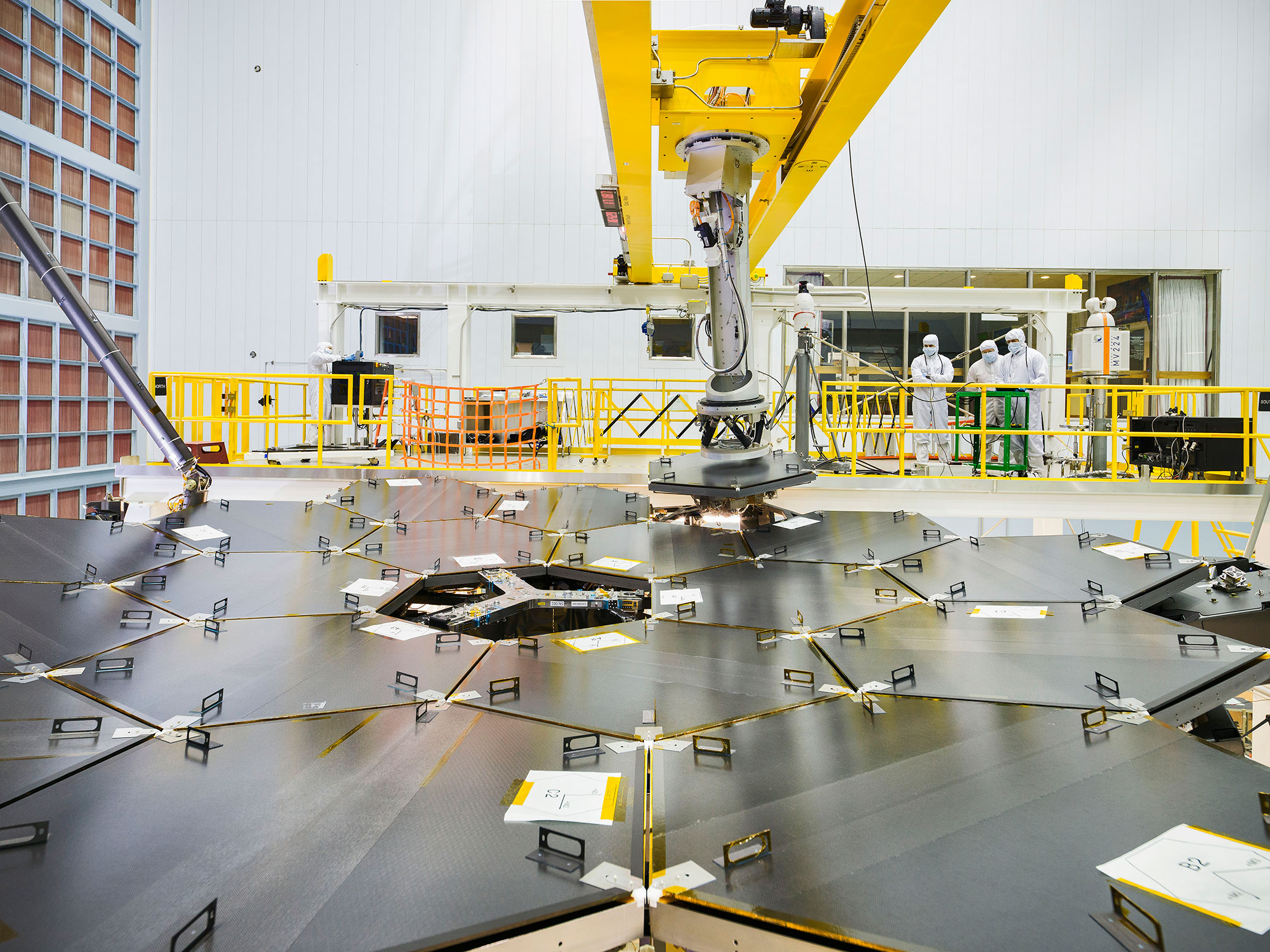
Construction of the James Webb Space Telescope (JWST), a NASA, European Space Agency (ESA), and Canadian Space Agency (CSA) collaborative project, continues to shape up in early 2016. NASA announced today that all of the observatory’s primary mirror segments are now installed. At Goddard Space Flight Center in Greenbelt, Maryland, the 18th and last segment was installed on Wednesday, Feb. 3rd. While this major milestone has been completed, cryogenic testing continues on the telescope’s Integrated Science Instrument Module (ISIM), described as the scientific “brain” of JWST.
These hexagonal-shaped segments, which weigh 88 pounds (40 kg) each and span 4.2 feet (1.3 m) across, are fabricated from lightweight beryllium and have been coated in gold to aid in the reflection of infrared light, although at present time they are shielded with protective black covers. JWST’s distinctive primary mirror was constructed in segments because if it had been fabricated in one piece, the mirror would have been too large and heavy to fit inside its Ariane 5 launch vehicle; the telescope’s design allows it to be folded neatly inside the launch vehicle’s fairing. Installation began in November last year.
Shortly after launch, the telescope will “spread its wings,” revealing its mirrors. JWST, touted as the Hubble Space Telescope’s successor and functioning primarily in infrared, will be the world’s largest and most powerful space telescope when operational. It will be a true “time machine,” with the capability of looking back upon the beginnings of the Universe. NASA’s Associate Administrator of the Science Mission Directorate in Washington, D.C., John Grunsfeld (a former astronaut who also flew on several Hubble repair missions), alluded to JWST’s unprecedented capabilities when he discussed the completion of this major construction milestone.
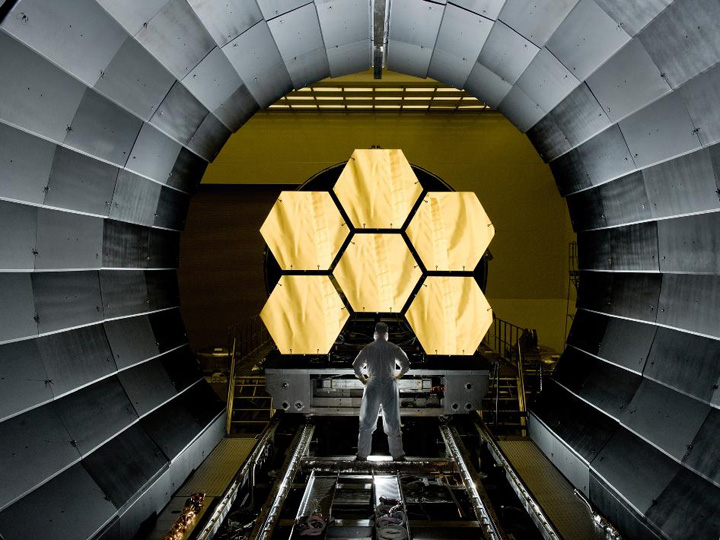
“Scientists and engineers have been working tirelessly to install these incredible, nearly perfect mirrors that will focus light from previously hidden realms of planetary atmospheres, star forming regions and the very beginnings of the Universe. With the mirrors finally complete, we are one step closer to the audacious observations that will unravel the mysteries of the Universe,” Grunsfeld said.
The mirror segments were built by the Ball Aerospace & Technologies Corp., located in Boulder, CO., which was subcontracted to Northrop Grumman for the telescope’s optical technology and optical system design. The mirror installation was completed by Harris Corporation, also subcontracted to Northrop Grumman; this company was described as leading JWST’s integration and testing.
Gary Matthews, Harris Company’s director of Universe Exploration, underscored how JWST has plenty other milestones to meet before it is launch-ready: “The Harris team will be installing the aft optics assembly and the secondary mirror in order to finish the actual telescope. The heart of the telescope, the Integrated Science Instrument Module [ISIM], will then be integrated into the telescope. After acoustic, vibration, and other tests at Goddard, we will ship the system down to Johnson Space Center in Houston for an intensive cryogenic optical test to ensure everything is working properly,” he said.
Video Credit: James Webb Space Telescope channel on YouTube
At present time, the ISIM is undergoing its third and final cryogenic test inside NASA Goddard’s thermal vacuum chamber. The telescope will function at the second Lagrangian Point, L2, 1 million miles (1.5 km) from Earth. This location will expose JWST and its components to extreme temperature conditions. A previous AmericaSpace article reported, “Temperatures here will be a bone-shatteringly cold -387 degrees Fahrenheit (-232 degrees Celsius, or 40 K). These temperatures are approximately 260 degrees colder than any place observed on Earth… In addition, it is critical these instruments function in space properly, as JWST will not be able to be serviced on-orbit unlike its predecessor, the Hubble Space Telescope, which operates in low-Earth orbit.”
The ISIM recently completed electromagnetic interference testing at NASA Goddard’s Electromagnetic Interference (EMI) laboratory at NASA Goddard. This component contains JWST’s four essential scientific instruments: its Near-Infrared Camera (NIRCam), Near-Infrared Spectrograph (NIRSpec), Mid-Infrared Instrument (MIRI), and Fine Guidance Sensor/Near InfraRed Imager and Slitless Spectrograph (FGS/NIRISS). The latest round of testing began on October 27, 2015, and continued even through recent snowstorms and severe winter weather in and around NASA Goddard’s facilities. ESA reported on Feb. 2nd that the ISIM is preparing to “come out of the cold,” with its components slated to reach room temperature by mid-month.
While primary mirror segment installation is complete and ISIM cryogenic testing is wrapping up soon, work on JWST is still far from over. JWST Project Manager Bill Ochs stated, “Now that the mirror is complete, we look forward to installing the other optics and conducting tests on all the components to make sure the telescope can withstand a rocket launch.” In October 2018, JWST is slated to launch aboard its Ariane 5 rocket in the early morning hours from Europe’s Spaceport in Kourou, French Guiana. While the launch is still two-and-a-half years away, Ochs echoed the sentiments of many hearing of the completion of JWST’s latest milestone: “This is a great way to start 2016!”
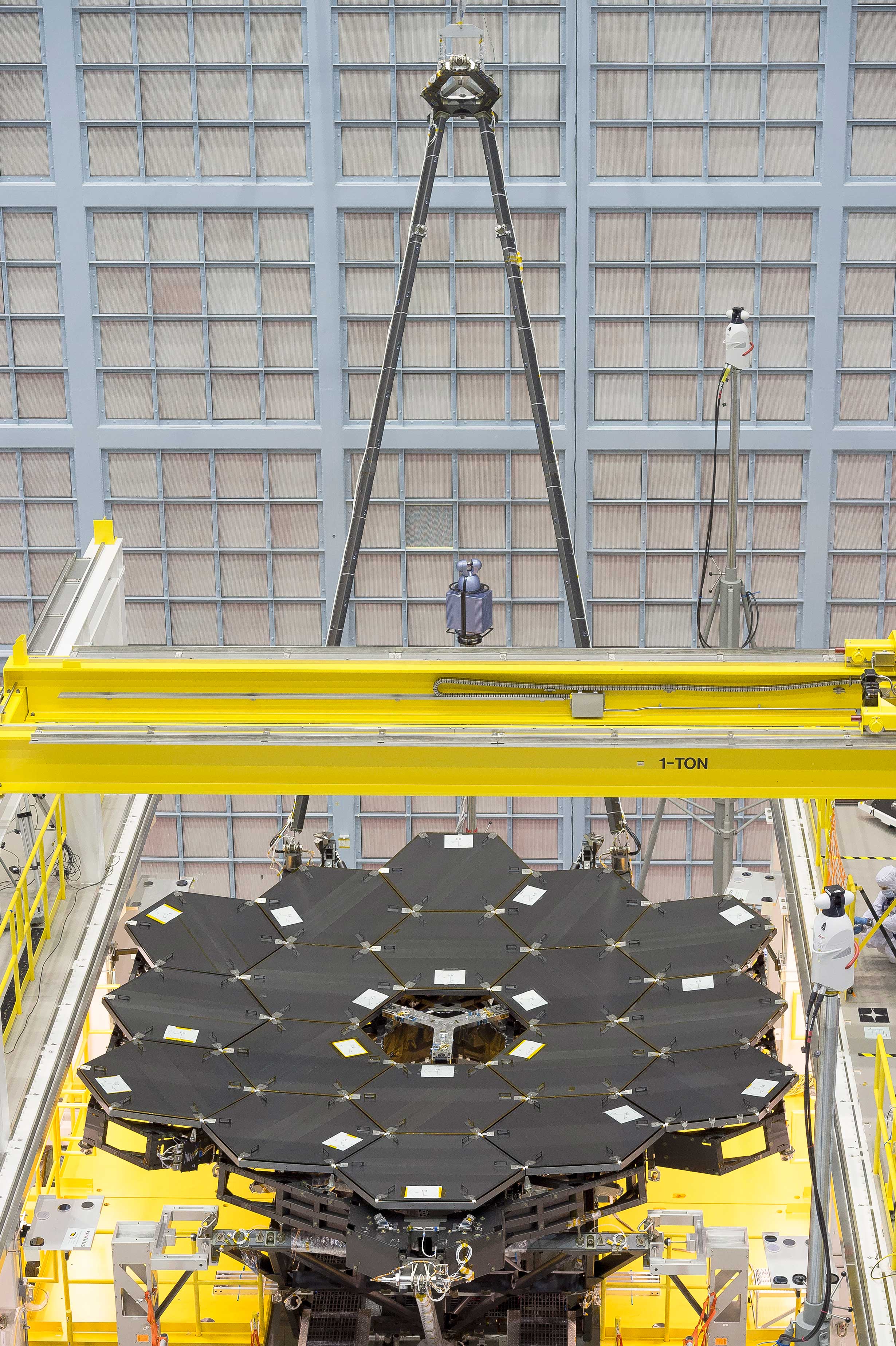
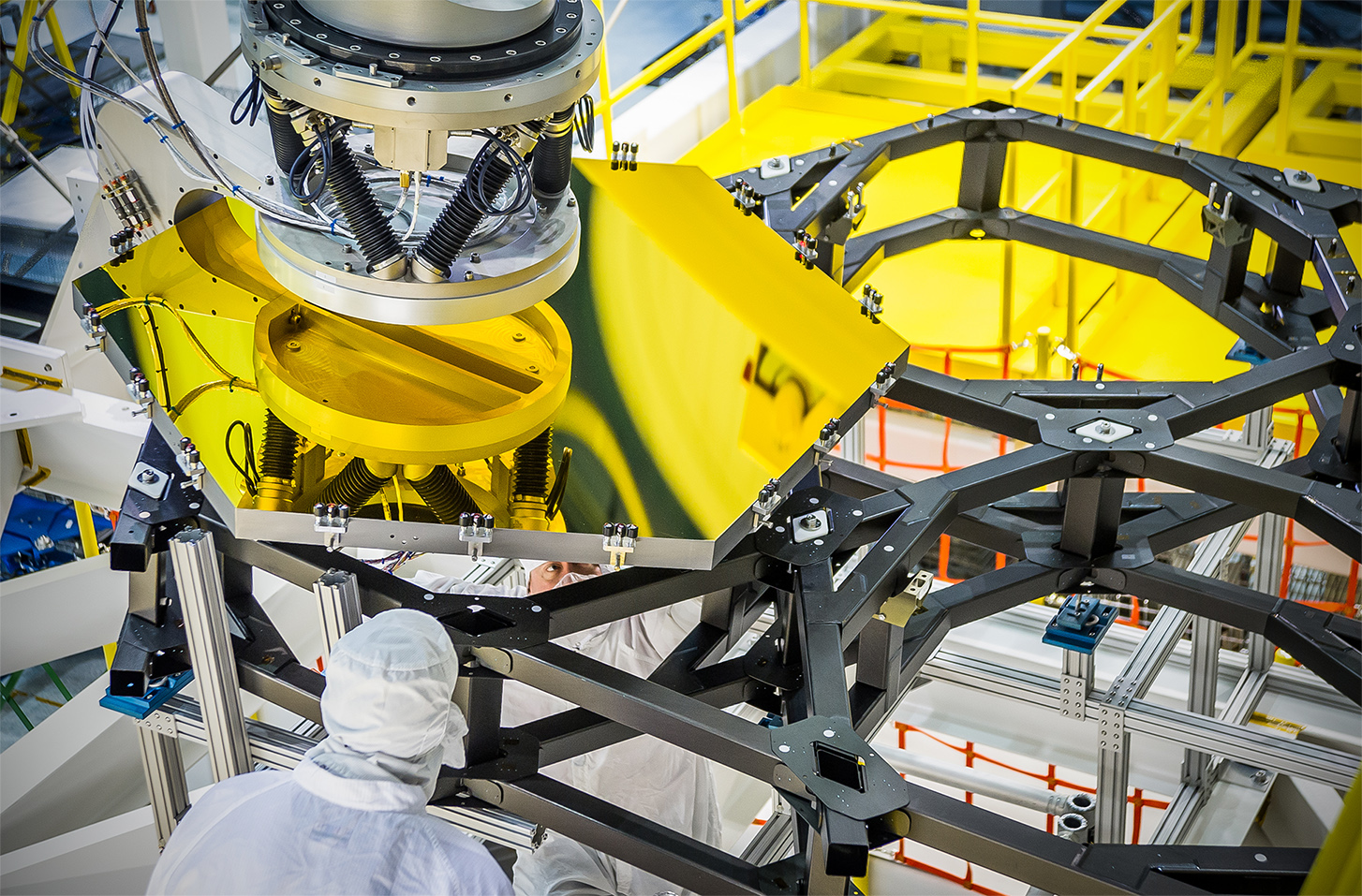
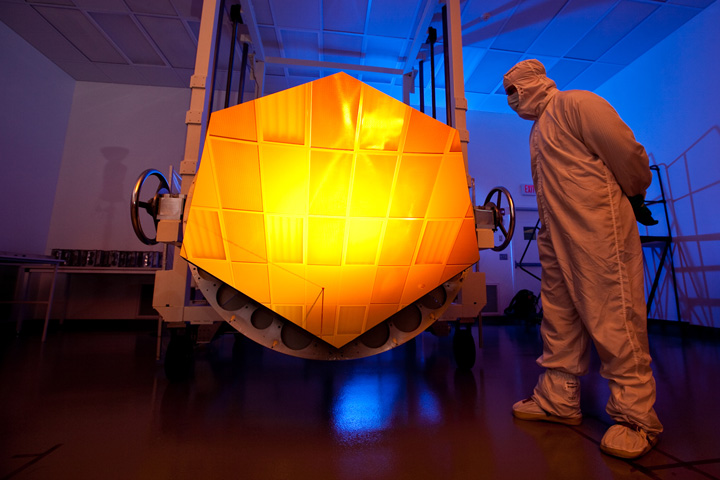
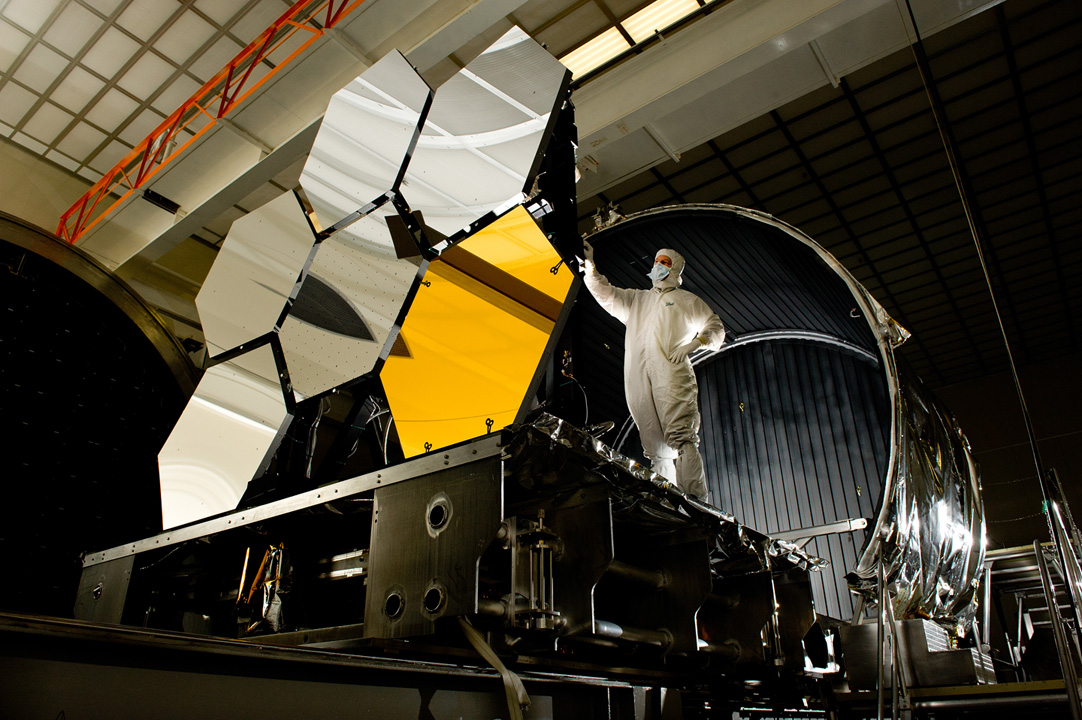
Credit: NASA/MSFC/David Higginbotham
Be sure to “Like” AmericaSpace on Facebook and follow us on Twitter: @AmericaSpace




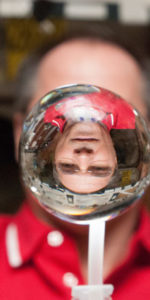
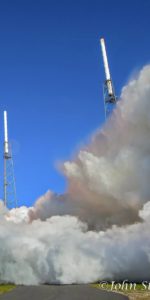
“The James Webb Space Telescope will be launched in 2014 to study the formation of the first stars and galaxies and shed new light on the evolution of the universe.”
I assume that this is a typo since JWST was never launched in 2014.